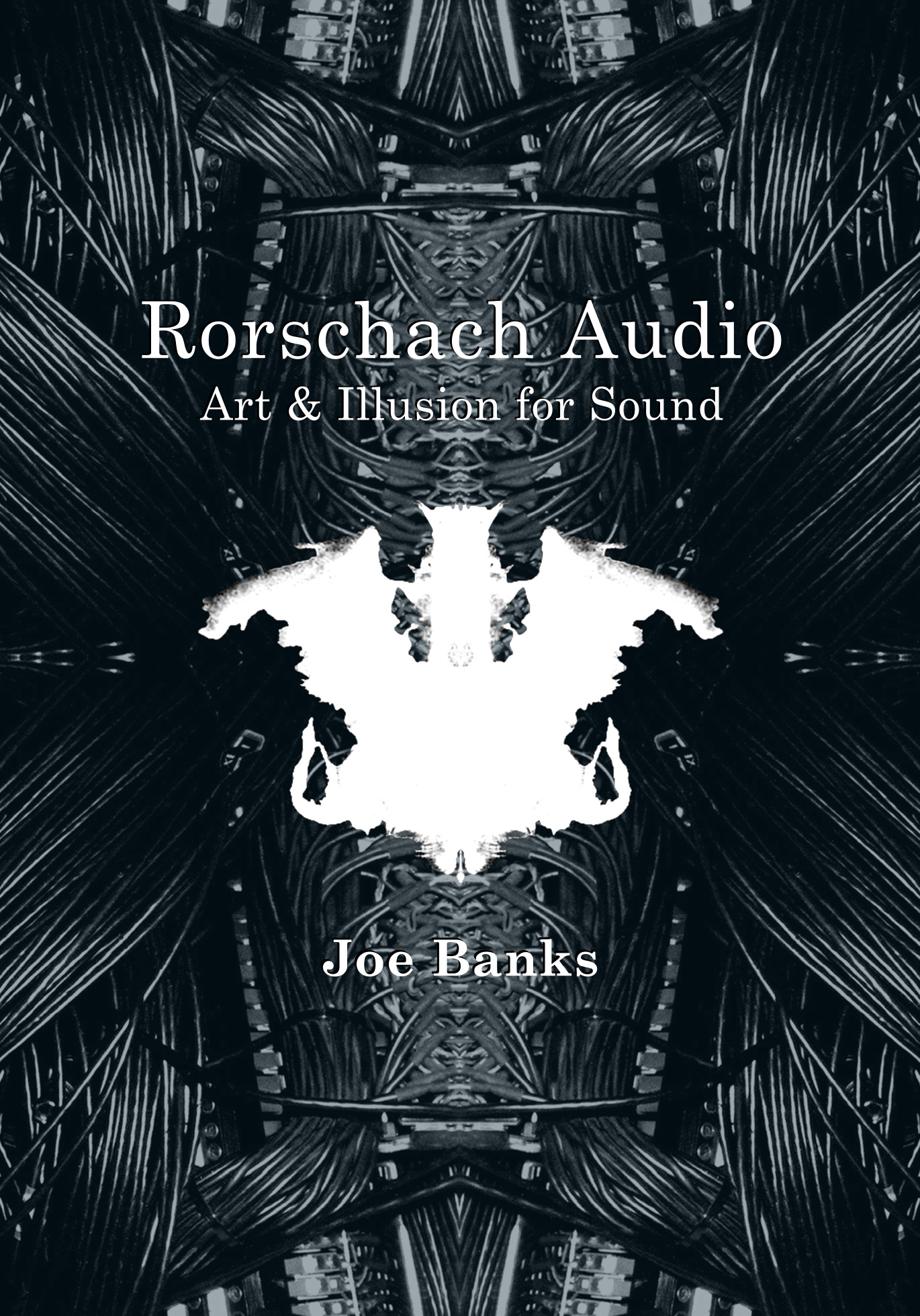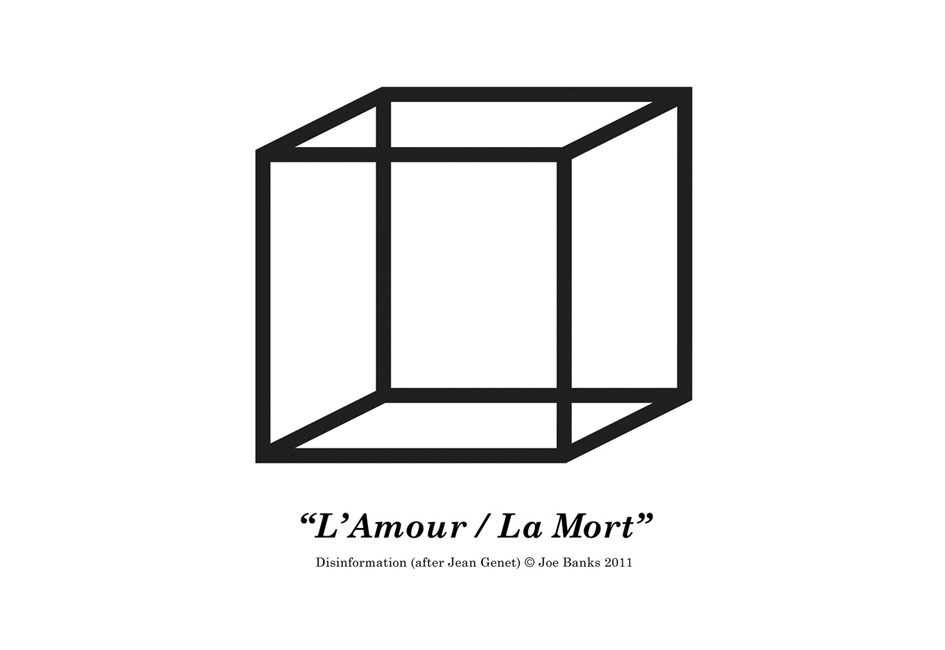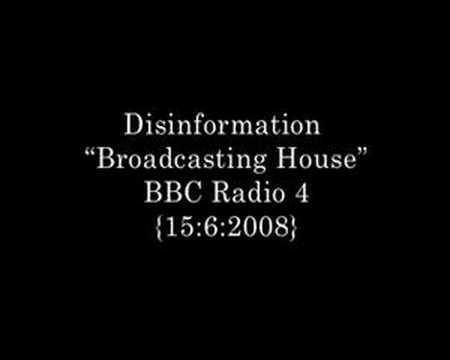Joe Banks’s new book, Rorschach Audio: Art & Illusion for Sound, is a wonderfully argued, eccentric and impassioned interrogation of aural perception. It is a book that lays its intentions bare from the outset, taking to task the unusual ‘discipline’ of Electronic Voice Phenomena research – a field of study that purports to be capable of documenting the voices of the dead. Having masqueraded as a legitimate science since the early sixties – with enthusiastic researchers claiming to have captured the voices of everyone from Mahatma Gandhi to Heinrich Himmler’s Masseur – Banks takes a sober stance on the supposed messages of the deceased and asks the more urgent question of what these recordings say about the living persons who make and interpret them.
The cultural scope of the book is dizzying, incorporating an intimidating range of wonderfully niche anecdotes, experiments and eccentricities. From the wordplay of proto-surrealist author Raymond Roussel, to the entrepreneurial development of spectral technologies by American ‘inventor’ George Meek, Banks has pulled together a great range of resources that animate questions surrounding the interrelationship of sound, technology, perception and belief. He took some time aside from his recording project, Disinformation, to answer some questions on wartime military surveillance technologies, the development of sound art, and Jean Genet’s infamous misperception of love.
You recast the art historian E.H. Gombrich in a very niche role: his ‘other life’ as a clandestine, wartime advisor to the BBC Monitoring Service. There is a great romance and mystery implicit in that, but it also seems to be a way of re-calibrating his ideas. Could you explain something of Gombrich’s activities at that time, and how your biographical focus informed the Rorschach Audio project?
Joe Banks: During WW2, before writing his books The Story of Art and Art & Illusion, Gombrich was employed by the BBC Monitoring Service, listening to the kind of communications chatter memorably described by Primo Levi as "the radiophonic Babel of war".
The Monitoring Service was funded by the War and Foreign Offices, to provide political intelligence for the armed forces, for MI6 and for Winston Churchill. As observed by Antony Gormley, the only thing Britain has to thank Nazism for is for the wave of immigration that Britain experienced in the 1930s, and the Monitoring Service drew heavily on refugees who escaped Europe to seek asylum in the UK, employing some extraordinary characters including E.H. Gombrich and the Spanish anti-fascist Arturo Barea, who wrote the book which is known in English as The Clash.
One thing that’s interested me is what David Cronenberg referred to as "the effects of exposure to violence on the nervous system"; the kind of hyper-acuity that I think people must have experienced during the Blackout. In situations of threat people evolve mechanisms of defensive listening, and projects like the BBC Monitoring Service and coastal Sound Mirrors can be seen as manifestations of that process. In my case, I have a relationship to electronic music and to sound art that was influenced by growing-up next to the RAF base near my grandad’s place. So early memories, particularly of darkness and dreams, are strongly associated with this hypnotic, musical drone of military transport planes, in comparison with the kind of sound-world people experienced during WW2. There’s something incredibly compelling about those kinds of hypnagogic experiences, and there are strong parallels in the experiences of wartime radio listening described by Primo Levi and evoked by Jean Cocteau in his film Orphée.
In terms of how this all links up with Art & Illusion, Gombrich came from a highly educated Viennese family, but, rather than using education and language as instruments of power, he chose to use them as instruments of demystification. It’s been said that when Gombrich came to the UK, art history was primarily concerned with connoisseurship – that is, in the negative sense, as a cultural weapon, to shore-up the perceived superiority of a fairly narrow circle of art collectors and patrons. The view of art that Gombrich promoted was one in which creative and aesthetic faculties extend from basic processes of perception; the same processes that produce illusions of vision and illusions of sound, and these faculties are shared by everyone.
Rorschach Audio also celebrates the artist William Hogarth, who fought similar battles in what he called his "War with the Connoisseurs"; some of the issues Gombrich addressed are as relevant now as they were in Hogarth’s day. More specifically, Gombrich made no bones about the fact that the ideas about perception expressed in Art & Illusion were influenced by ideas about the interpretation of sound that he developed during WW2. Rorschach Audio didn’t discover that link, however what it did do was point out how important those ideas could be to contemporary sound art. This is particularly relevant in the context of applying Gombrich’s ideas about the psychology of ‘projection’ to demystifying the so-called Electronic Voice Phenomena recordings, that have been championed by an amazing number of leading sound (and even visual) artists.
EVP is a belief system, a bit like the UFO movement, that represents distorted radio chatter as ‘scientific’ evidence of supernatural activity; the first half of the Rorschach Audio book is dedicated to critically analysing EVP.
In a recently published presentation (On Sound Art, originally delivered in 2002) the artist Susan Hiller proposes a kind of synchronicity between the emergence of John Cage’s exploration of silence and the Electronic Voice Phenomena research conducted by Konstantin Raudive in the 1950s. It’s a position that emphasizes the mysterious, supernatural mesmerism of recorded silence. As a preliminary sketch for a formative moment in the history of sound art practice it’s fairly weighted toward the mystical. Your book however, seems born of a certain frustration with sound artists’ interest in EVP; what kind of milieu gave rise to the Rorschach Audio project?
JB: Just to clarify a bit more of the background, EVP research stems from the belief that radio and tape-recording technology (etc.) can be used to record not just supernatural activity, but to record the voices of ghosts specifically. John Cage’s famous ‘silent’ composition ‘4’33"’ was composed in 1952 and his book Silence was published in 1961; however, according to Raudive’s book Breakthrough, Raudive didn’t take an interest in what would later be termed EVP research until 1964, didn’t publish in German until 1968, and didn’t publish in English until 1971. So, if there was any synchronicity between Cage and Raudive, it had little to do with chronology.
Susan Hiller did give an interview to Gavin Jantjes in 1998, which is quoted in Rorschach Audio. In that interview she talks about Raudive’s EVP work in terms of "supernatural beings… mysterious powers… lands of the dead [and] fabulous monsters" and relates "arguments around the position of the feminine within art practice" to the "irrational, anarchic and untheorised" – which, as the book points out, is quite hard to reconcile with Raudive theorising his own research as objective and scientific, and quite hard to reconcile with the patriarchal nature of Raudive’s Roman Catholicism.
As I think the book also demonstrates, the main cultural event that EVP research was linked to was Nazism. Raudive himself stated that his friend and alleged ghost-contact Margarete Petrautzki was a former employee of the Hitler Youth, while EVP researcher Friedrich Jürgenson claimed to have been friends with – and to have recorded the ghost of – Himmler’s masseur Felix Kersten. While I’m definitely not accusing EVP researchers of having been Nazi sympathisers, if Raudive and Jürgenson were haunted by anything, that certainly included unresolved trauma caused by contact with Nazism. Their recordings are littered with alleged contacts with the ghosts of leading Nazis, to the extent that Raudive stated that EVP recordings "by Hitler or about him could fill a separate book".
As for the Rorschach Audio project, in the same year that I put together the first LPs and CDs for the sound art project Disinformation, I also read a Scientific American article which described a recording of ambiguous voice sounds made by psychoacoustics expert Diana Deutsch. The recording consists of short syllables which are rapidly repeated, in such a way that the sounds are initially perceived as being meaningless, before listeners start (using Gombrich’s terminology) to project sometimes quite vivid illusions of meaning onto the jumble of noise.
As for the broader milieu that gave rise to Rorschach Audio, I was stunned by the attitude that many people took and still take towards EVP. There are dozens of artists who seem to have fallen hook, line and sinker for EVP research. However, it rapidly became apparent that a critical discourse could provide an excellent vehicle for demonstrating important lessons about the perception of sound, about the philosophy and working-methods that determine whether research is scientific or not, and about the nature of relationships between art and science, and it’s been my great pleasure to have been involved in that work ever since.
One of the book’s essays, ‘L’Amour/La Mort’, derives its name from an infamous misperception of speech by the French author, activist and filmmaker Jean Genet. It provides the grounds for a discussion of word play, homophonic games and their role in the construction of literary identities, citing examples from the lives and works of well-known authors Yukio Mishima, Raymond Roussel and James Joyce. There’s a tendency to read these instances as betrayals of their authors’ desires and complexes, something deeply interior. But you also speak of the experiences of two other authors that were unknown to me, Geoffrey Grigson and Indu K. Mallah, whose perceptions of sound emanating from their immediate environments seem to elucidate something of the worlds of industry and mechanization they found themselves surrounded by…
JB: In the case of the Genet and Mishima references, I videotaped the Genet interview off the TV when it was originally broadcast; in both cases the specific material, while not unknown, has attracted surprisingly little attention. The interviewer asks Jean Genet about ‘L’Amour’, Genet says he heard the sound ‘La Mort’, and this time the analogy I made is not to the illusory forms seen in Rorschach ink-blot tests, but to the perceptual inversions seen when people observe the illusion discovered by Swiss crystallographer Louis Albert Necker. In ‘Saint Genet’ Jean-Paul Sartre quotes Jean Genet as saying his fixation with love and death stemmed from a heterosexual relationship – from a childhood crush Genet had on a girl who died, which is interesting not least as a paradox in light of Genet’s importance in gay counterculture. The other example is the back-story behind Yukio Mishima not actually being Yukio Mishima’s real name, which, without wishing to introduce a plot-spoiler, is absolutely fascinating.
One of the arguments that a number of sound art curators and critics etc. have put forward to counter earlier Rorschach Audio publications, was the claim that challenging the factual integrity of EVP research was somehow missing the point: instead of being the scientists they wanted to be seen as, EVP researchers are in fact artists and poets. Using an argument from Sartre, the book’s response is to question whether or not EVP researchers were, as artists and poets, actually any good – as Sartre pointed out "anyone can write bad verses".
With regard to those sorts of problems, Geoffrey Grigson was described by the historian Jeremy Archer as an "extremely able and erudite critic, editor, writer and poet" for whom "the truth was important and, if people were upset as a consequence, then so be it". The more specific relevance here however, is that he worked for the BBC Monitoring Service, wrote about a Cornish miller recalling illusions produced by the sound of rotating mill-wheels, and compiled an anthology which includes the poem ‘London Bells’ – "Oranges and Lemons, Say the bells of St Clements". Gombrich cites a sound illusion described by no less than Leonardo da Vinci, in which the great man described spoken names emerging from church-bells.
Diana Deutsch responded to my quoting da Vinci in an article I sent her, saying Leonardo might have been particularly susceptible to such illusions because of his extreme creativity; while that’s certainly true, what the bells and mill-wheels demonstrate is the extent to which the capacity to form such illusions is shared by all people as an important part of normal perception.
As a case in point, another illusion that E.H. Gombrich described is the tendency of old-fashioned trains to sound as though they were producing music – "it isn’t easy once you hear your train rattling Carmen to make it change to the Blue Danube. I don’t think Gombrich was a big fan of noise music, but maybe, in his own way, he didn’t realise he was a fan of noise music? Such perceptions are the basis for much of the imagery in Indu Mallah’s book Shadows in Dream Time. In view of my interests, it’s hard to resist the temptation to describe Shadows In Dream Time as wonderful, but it was inspired by a profound tragedy, so I guess it would be more appropriate to describe the book as simply excellent.
The idea that a kind of technological mise-en-scene has been employed to support the scientific validity of EVP research brings to mind films like Nigel Kneale’s The Stone Tape or Robert Wise’s The Haunting, in which the supposedly rational parameters of scientific investigation reveal something of the vulnerability, impressionability or instability of their test subjects or operators. How might techniques play out in your own work as Disinformation, coercing or guiding the responses of listeners and viewers with sound and image?
JB: Mise-en-scene is a very nice way of putting it. First, most obviously, the book argues that the misinterpretation of stray radio chatter as personally meaningful voices results from audio illusions, equivalent to the interpretation of symmetrical ink-blots, although there’s a lot more interesting detail that’s less self-evident than that central metaphor. Second, the book develops the case about illusions of sound into an argument about illusions of language, although, for reasons of space, that’s not explored at length, however that’s highly relevant to philosophy and to art and music criticism. Third, while the misunderstanding of audio illusions has been promoted in evangelical and, most recently, Islamophobic smear-campaigns, also in historically important legal cases, in the case of EVP the book also argues that ghost-voice researchers support illusions of sound with equivalent visual illusions, using the superficial appearance of certain types of technology – tape recorders, radios, oscilloscopes etc – to create the illusion that their experiments are scientific. In that way, the book argues that EVP researchers try to conjure illusions of science, which are in reality closer to stage-magic than to real science, and, considered as a form of stage-craft, as with traditional séances, in that context the term mise-en-scene makes absolutely perfect sense. Just as the book explores the distinction between sensation and perception, there’s also a distinction between technology and science. Sensation is about raw data, perception is about meaning; technology is a product, science is a method.
As it happens, The Stone Tape is an old favourite of Mark Pilkington (of Strange Attractor Press), who I guess you could describe as – if I was the director – this book’s producer. Several Disinformation works are to do with anthropomorphism and technology. During WW2 German soldiers reported hearing ghosts of artillery shells whistling through headphones as they tried to intercept messages from British Army field telephones – the basis for the Disinformation track ‘Ghost Shells’ (which got over 49,000 hits before it was pulled from YouTube). During WW2 the RAF referred to unidentified radar traces, as… well there’s a Disinformation video called ‘Angel’. The difference between those experiences and EVP is that no-one tried to fool anyone into thinking those ghosts and angels were manifestations of dead people.

Rorschach Audio: Art & Illusion for Sound is out now on Strange Attractor Press



